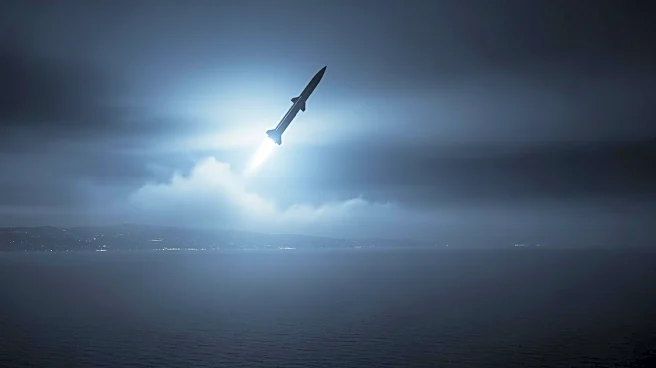What's Happening?
A recent analysis highlights the growing threat posed by North Korea's missile capabilities, which could potentially target U.S. territories and military bases in the Pacific. The Kim Jong Un regime continues
to develop its ballistic missile program, despite international sanctions, with newer models featuring extended ranges and reduced detection times. These advancements have heightened tensions with neighboring countries such as South Korea and Japan, both of which host significant numbers of American troops. North Korea's missile arsenal includes medium-range missiles like the Hwasong-9, capable of reaching South Korea and parts of Japan, and intermediate-range systems such as the Hwasong-10, which can threaten U.S. military targets in the Western Pacific, including Guam. The Hwasong-14, North Korea's first intercontinental ballistic missile, has the potential to reach Hawaii, Alaska, and much of the continental United States.
Why It's Important?
The expansion of North Korea's missile capabilities poses a significant threat to U.S. national security and regional stability. The ability to target U.S. territories and military installations increases the risk of conflict and complicates defense strategies for the United States and its allies. This development underscores the need for enhanced missile defense systems and diplomatic efforts to mitigate the threat. The situation also impacts geopolitical dynamics in the region, as countries like South Korea and Japan may seek to bolster their own defense capabilities in response. The ongoing missile development by North Korea challenges international non-proliferation efforts and raises concerns about the potential for nuclear escalation.
What's Next?
The U.S. Defense Intelligence Agency has projected that North Korea's arsenal of missiles capable of reaching the United States could grow significantly by 2035. This potential increase in missile numbers necessitates continued monitoring and strategic planning by U.S. defense agencies. Diplomatic efforts to address the threat may involve negotiations with North Korea and collaboration with regional allies to strengthen defense postures. The international community may also consider additional sanctions or diplomatic measures to curb North Korea's missile development.













